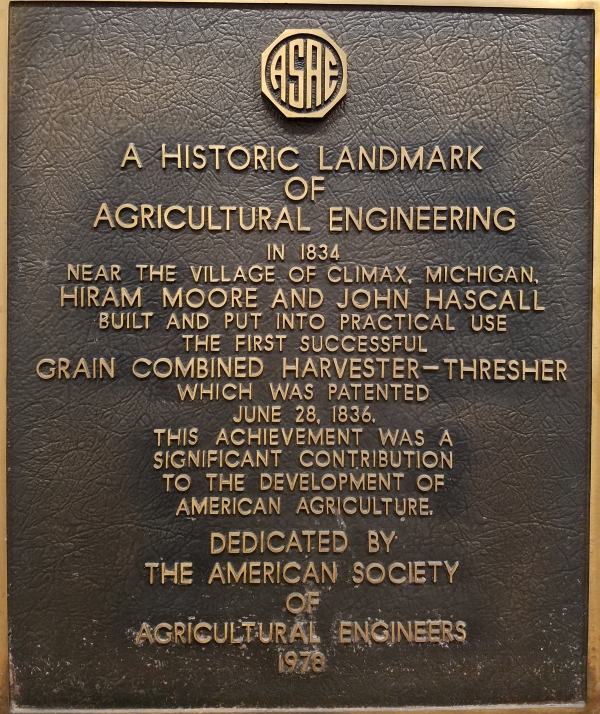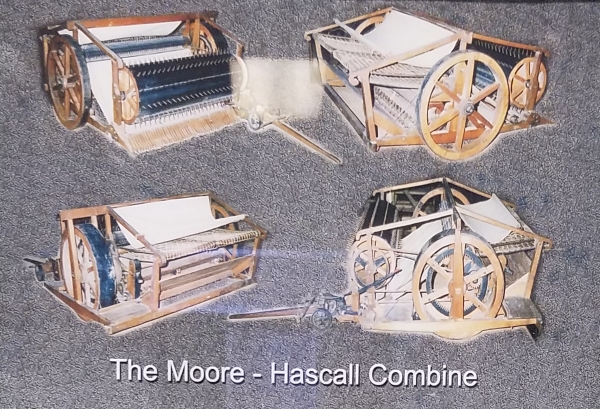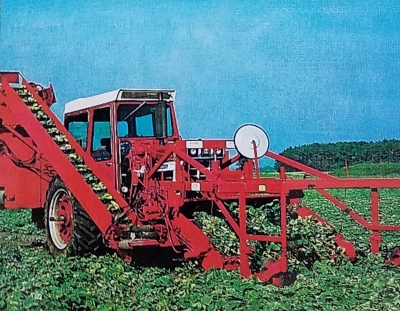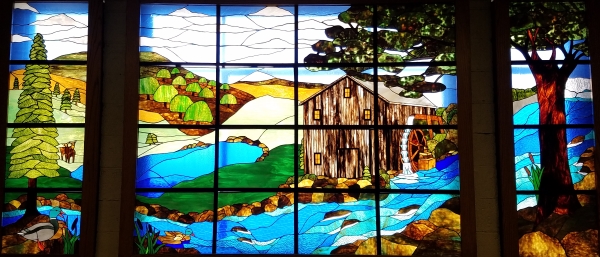Mission & History
Vision
A premier department that is globally recognized for innovative solutions in biological and agricultural engineering.
Mission
To improve quality of life by integrating and applying principles of engineering and biology to systems involving food, environment, energy, and health.

A historic landmark of Agricultural Engineering: A grain combined harvester-thresher.
In 1834 near the village of Climax, Michigan, Hiram Moore and John Hascall built and put into practical use the first successful grain combined harvester-thresher which was patented June 28, 1836. This achievement was a significant contribution to the development of American Agriculture. Dedicated by the American Society of Agricultural Engineers 1978.

Moore / Hascall Grain Combined Harvester-Thresher
A historical landmark of Agricultural and Biological Engineering: Once-over mechanical harvesting of cucumbers.
The concept of once-over mechanical, as opposed to multiple-pick hand or experimental multiple-pick machine harvesting, represented a major break-through in the practice of producing vine fruit such as pickling cucumbers. In the 1950's the cost of hand harvesting was as high as 50% of the production cost. Once-over mechanical harvesting, coupled with increasing plant population, reduced this cost to 25% thereby making production economically viable.
At the heart of the once-over harvester is a mechanical pinch-roll vine-fruit separation system developed by Michigan State University researchers Bill Stout, Max DeLong and Stan Ries in 1961 with support from cucumber growers and processors. A harvester was successfully field tested in 1963. Food Machinery Chemical (FMC) Corporation, Hoopeston, IL fabricated 1 prototype harvester in 1964 and 5 in 1965. FMC and other companies manufactured an estimated 230 harvesters in the 1960's and 300 through 2009.
Today, once-over mechanical harvesting has become universally adopted method of harvesting vine fruit and is used around the world. Dedicated by the American Society of Agricultural and Biological Engineers, 2011.

Once-Over Mechanical Cucumber Harvester
Living in Harmony with Nature
This stained glass mural, completed in 1989, was designed and crafted for the Department of Agricultural Engineering by Nancy Truscott, Mason, Michigan. The project was entirely funded by Departmental retirees, faculty, staff, students and USDA personnel. Installed in the second floor main entrance stairwell, the mural is a reminder of the rich history of Farrall Hall. Please stop by Farrall to see the mural and learn more about MSU Biosystems and Agricultural Engineering history.




 Print
Print Email
Email